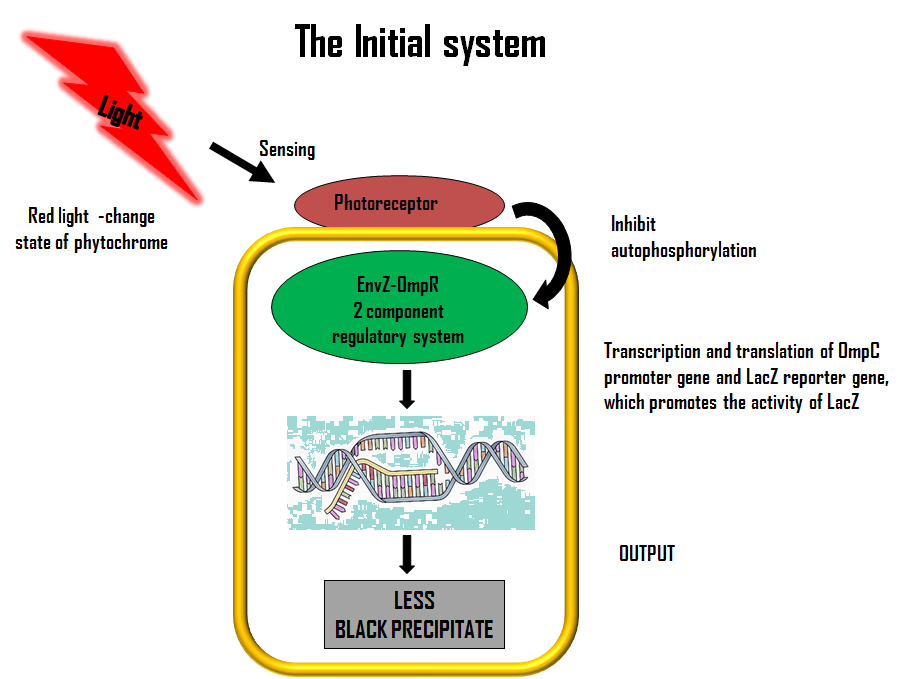Team:Sheffield/Modeling
From 2009.igem.org
Kirubhakaran (Talk | contribs) |
Kirubhakaran (Talk | contribs) |
||
| Line 34: | Line 34: | ||
[[Image:initial.png|center|550px|border]] | [[Image:initial.png|center|550px|border]] | ||
| + | |||
| + | |||
The above flow chart can be reconstructed into a control block diagram; | The above flow chart can be reconstructed into a control block diagram; | ||
| Line 39: | Line 41: | ||
[[Image:control.png|center|480px|border]] | [[Image:control.png|center|480px|border]] | ||
| + | |||
| + | |||
The script below shows how each block parameters are designed | The script below shows how each block parameters are designed | ||
| Line 44: | Line 48: | ||
| - | [[Image:active.png|center| | + | [[Image:active.png|center|850px|border]] |
| + | |||
| + | Our next step is to simulate the model, which brings about an interesting design practise which my team has employed. Which is how does the photoreceptor works? And how does it affect the system when light varies? | ||
| + | A point to note; each ODE’s tends to a steady state after some time. Therefore we have suggested that: | ||
| + | Each constant varies with amount of light shined on the system and as well achieves a steady state at a certain point. | ||
| Line 63: | Line 71: | ||
| - | |||
|} | |} | ||
Revision as of 22:38, 25 September 2009
| Home | Team | Project | Parts | Modeling | Notebook |
|---|
|
SYSTEM BREAKDOWNWe are going to analyse the biological system in a control perspective way. Our 3 main aims are; 1) Suggesting a realistic model for the system 2) Comparing the wet lab result with our model 3) A standard description of how our overall system intends to work.
MODELLets first look at how our initial system works. The flow diagram below gives a brief description of it;
The above flow chart can be reconstructed into a control block diagram;
The script below shows how each block parameters are designed
Our next step is to simulate the model, which brings about an interesting design practise which my team has employed. Which is how does the photoreceptor works? And how does it affect the system when light varies? A point to note; each ODE’s tends to a steady state after some time. Therefore we have suggested that: Each constant varies with amount of light shined on the system and as well achieves a steady state at a certain point.
|
 "
"



